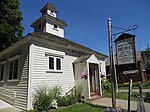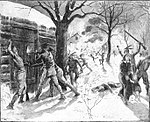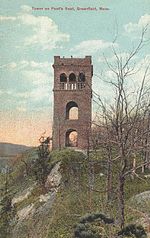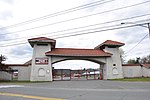Historic Deerfield
Deerfield, MassachusettsHistoric districts on the National Register of Historic Places in MassachusettsHistoric house museums in MassachusettsHistory museums in MassachusettsHouses in Franklin County, Massachusetts ... and 6 more
Museums in Franklin County, MassachusettsNRHP infobox with nocatNational Historic Landmarks in MassachusettsNational Register of Historic Places in Franklin County, MassachusettsOpen-air museums in MassachusettsUse mdy dates from August 2023

Historic Deerfield is a museum dedicated to the heritage and preservation of Deerfield, Massachusetts, and history of the Connecticut River Valley. Its historic houses, museums, and programs provide visitors with an understanding of New England's historic villages and countryside. It is located in the village of Old Deerfield which has been designated a National Historic Landmark District (as the Old Deerfield Historic District), and is listed on the National Register of Historic Places. The museum also hosts the Dublin Seminar for New England Folklife.
Excerpt from the Wikipedia article Historic Deerfield (License: CC BY-SA 3.0, Authors, Images).Historic Deerfield
Old Main Street,
Geographical coordinates (GPS) Address Nearby Places Show on map
Geographical coordinates (GPS)
| Latitude | Longitude |
|---|---|
| N 42.547 ° | E -72.604138888889 ° |
Address
Deerfield Inn
Old Main Street 81
01342
Massachusetts, United States
Open on Google Maps









